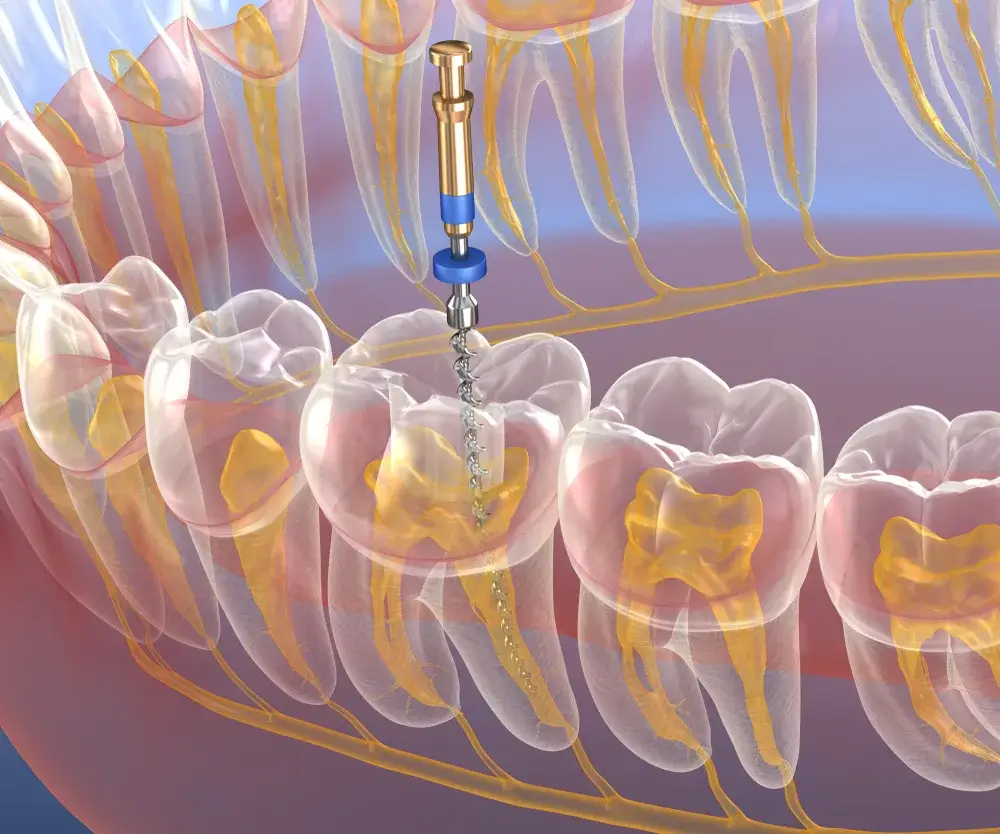Do Root Canals Hurt? Debunking the Most Common Dental Myths
Root canals are often misunderstood, with many believing they cause intense pain and discomfort. Thanks to advancements in dental care, however, root canals are now routine and relatively painless. This article explores the realities of treatment, debunks widespread myths, and explains why this dental procedure is crucial for addressing tooth infection and saving natural teeth read more.


What Is a Root Canal and Why Is It Performed?
A root canal is a dental procedure used to treat severe tooth infection or damage. It involves removing the infected pulp from inside the tooth, cleaning and disinfecting the root canals, and then sealing the space to prevent further infection. The purpose of this dental procedure is to save the natural tooth, maintain its function, and eliminate pain caused by deep decay or trauma.
Dentists typically recommend a root canal when a cavity has penetrated the pulp, a tooth has been fractured, or an untreated infection has caused an abscess. Other signs include prolonged sensitivity to temperature, pain while chewing, visible swelling, and x-ray evidence of internal tooth damage.
The Truth Behind the Most Common Root Canal Myths
Many misconceptions exist about root canal treatment. One of the most common myths is that root canals are extremely painful. In reality, with modern anesthetics and techniques, the procedure is no more painful than a typical dental filling. In fact, the purpose of a root canal is to relieve pain, not cause it.
Another widespread belief is that it’s better to extract the tooth rather than undergo a root canal. However, preserving your natural teeth is almost always the better option. Tooth extraction may lead to additional procedures like dental implants or bridges, which can be costly and involve more time and discomfort. A root, by contrast, allows you to keep your natural smile and tooth structure.
Some people assume that root canals require multiple appointments. While complex cases may need more than one visit, many canals are completed in a single session, especially with today’s advanced technology.
Another outdated myth suggests that root canals cause illness. This idea stems from old and discredited studies. Extensive research has proven that canal treatment is a safe and effective dental procedure with no connection to systemic diseases.
There is also the misconception that a tooth treated with a root is “dead.” While the pulp is removed during the process, the tooth remains fully functional. With a proper crown and good oral hygiene, a treated tooth can last for decades.
What Happens During a Root Canal Procedure?
The process begins with a thorough examination and diagnostic imaging. Once the need for treatment is confirmed, the dentist administers local anesthesia to numb the area. The infected pulp is then removed from the inside of the tooth. After removal, the inner canals are meticulously cleaned, shaped, and disinfected.
A biocompatible material is used to fill the space inside the root, and the tooth is sealed to prevent future infection. Often, a dental crown is placed on top of the treated tooth to restore its strength, appearance, and function.
This entire dental procedure usually takes between 60 to 90 minutes and is conducted under local anesthesia to ensure patient comfort.
Recovery and Post-Treatment Care
After a root, some mild discomfort or sensitivity is normal for a few days. This can be managed with over-the-counter pain relievers. Patients should avoid biting or chewing on the treated tooth until it has been fully restored with a permanent crown.
It is important to continue brushing and flossing regularly and to attend follow-up appointments with your dentist. If pain persists or worsens after several days, contact your dentist to rule out complications.
How Long Do Root Treatment Last?
When performed correctly and followed by proper aftercare, a root can last a lifetime. However, in some cases, reinfection can occur, requiring retreatment. Regular dental visits and consistent oral hygiene significantly increase the longevity of the treated tooth.
Why Choose a Root Treatment Over Tooth Extraction?
Opting for a root instead of extracting the tooth provides numerous long-term benefits. Retaining natural teeth helps preserve jawbone integrity and ensures better chewing efficiency. It also prevents the shifting of adjacent teeth, which can lead to bite problems and aesthetic concerns.
In comparison, tooth extraction may require dental implants, bridges, or dentures—each involving additional procedures and expenses. A root , as a minimally invasive dental procedure, is more efficient and cost-effective in the long run.
Preventing the Need for Root Treatment
Good oral hygiene is key to preventing the need for a root. Brushing twice a day with fluoride toothpaste, flossing daily, and limiting sugary or acidic foods help prevent cavities and tooth infection. Regular dental checkups allow your dentist to detect early signs of decay and address them before they progress.
Using a mouthguard during sports or if you grind your teeth at night also reduces the risk of dental trauma, which can lead to the need for a root.
When to See a Dentist
If you experience persistent tooth pain, sensitivity to hot or cold, swelling, gum tenderness, or discoloration of a tooth, it’s time to see a dentist. A small issue left untreated can quickly develop into a major tooth infection requiring a root or even tooth loss.
Early diagnosis and timely dental procedures not only reduce the complexity of treatment but also ensure better outcomes.
Conclusion
Root canal are a safe, effective, and often painless dental procedure designed to eliminate tooth infection and save natural teeth. Despite common myths, modern root treatment provides long-lasting results and relief from discomfort. With proper care and guidance from your dentist, a treated tooth can remain healthy and functional for life.
If you’re experiencing dental pain or have been advised to consider, consult with a professional to understand your options. Knowing the facts empowers you to make informed decisions about your oral health and maintain your natural smile with confidence read more.
